Paytm- How is the world of digital transactions being changed by the Paytm success Story?
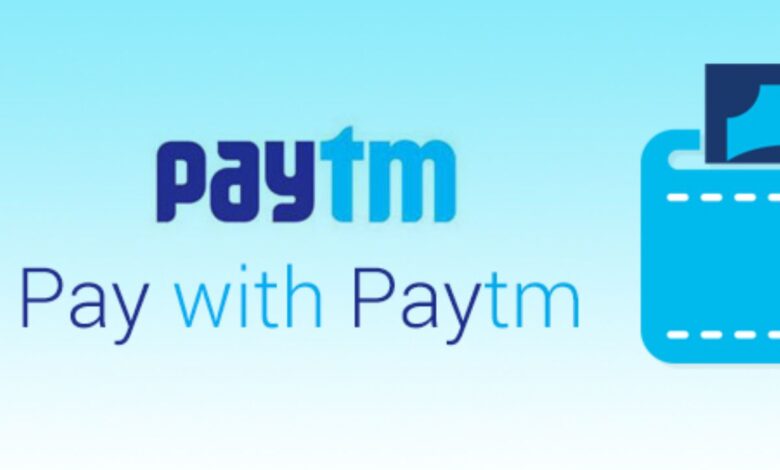
Paytm – Success Story
Paytm is Paying our bills, shopping, and other people are highly important aspects of daily life. The only means to make such payments was through the handling of currency. But the quick growth of markets, the diversification of our everyday demands, and the dominating digital trend have exposed the shortcomings of cash-based transactions and established online money transfer alternatives. Additionally, cash-based transactions are obscuring.
Monetary transactions are risky with the start of the coronavirus pandemic.
Demonetization, the Covid-19 outbreak, and widespread movements of digitalization across the countries have all increased the volume of digital transactions. One of the earliest digital payment apps, Paytm, has changed Indian History.
With its well-known phrase, “Paytm Karo,” the business promotes mobile payments.
The business is headquartered in Noida, Uttar Pradesh, and was established in 2010. The successful journey of Paytm is presented here. You can learn more about the company here, including its headquarters, funding rounds, logo, bank owner, plans, business and revenue model, and problems.
You can find out how many countries use Paytm by reading the section below.
Paytm – Overview
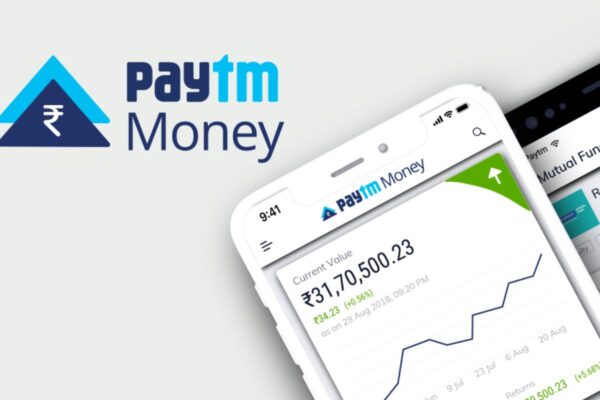
Leading bill-paying and financial service app Through its platform Paytm provides its users financial solutions of mobile, DTH recharge alternatives, and more. The parent organisation of the Paytm online store is One97 Communications. Paytm’s corporate headquarters are in Noida, Uttar Pradesh.
The Paytm company was founded by Vijay Shekhar Sharma in 2010.
The company swiftly grew in popularity and includes wallet services, commerce capabilities, and other things to better the lives of Indians.
With more than 58 million people, Paytm Payments Bank is the largest digital bank in the country. The largest investment platform, “Paytm Money,” supports Systematic Investment Plans (SIP) in the Mutual Funds Sector. According to news dated March 11, 2022, the RBI just stopped the Paytm Payments Bank from establishing a new one.
The RBI has to approve a new one before their joining. The finance juggernaut’s subsidiary violated the “Storage of Payment System Data” law,
It can now start providing services to the stock market and the national pension system (NPS). Additionally, Paytm First Games and Paytm Insurance have attracted millions of users globally.
Paytm – Sector
A CAGR of 11.21 per cent is predicted for the digital payments market from 2021 to 2026, with transactions valued at $5.44 trillion in 2020 and $11.29 trillion by 2026. Paytm is the third-largest player in Market India in digital payments, behind PhonePe and Google Pay.
Paytm – Founders and Team
Vijay Shekhar Sharma

Paytm was started by Vijay Shekhar Sharma, who is also a CEO. Sharma is the top internet business in India. When his net worth was seen to be $1.3 billion in 2017, He is the youngest billionaire listed on Forbes. The highest civilian accolade bestowed by Uttar Pradesh, the Yash Bharati, was also given to the CEO of Paytm.
Vijay Shekhar Sharma has been reappointed for the position of Paytm’s managing director (MD) and chief executive officer (CEO) for another seven years, beginning on December 19, 2022, and concluding on December 18, 2027. Along with him, the company has approved the appointment of Madhur Deora, Paytm’s CFO, as a second director of the business.
This appointment will take effect in December, and last until December 18, 2027. Deora given resigned through rotation, but the MD and CEO of Paytm will not be needed to do so.
He was raised in a middle-class home in Aligarh and excelled academically from an early age. Despite being a talented student, he attended a Hindi-only school and quickly became aware of his English language shortcomings when applying for colleges. Vijay, refused to give in to it and bravely faced and overcame his problems.
After receiving his admission, he enrolled in the Delhi College of Engineering, where he graduated with a Btech in Electronics and Communications Engineering.
He had a constant yearning to start his own business. To launch his entrepreneurial career, Vijay created indiasite.net in 1997 when he was still a college student. He sold his website for $1 million after two years, but only to succeed as an entrepreneur. To provide mobile news, ringtones, jokes, and cricket scores,
He launched One97 Communications in 2000. Later, this business gave birth to Paytm, which he founded in 2010 with a $2 million investment in Noida.
Vijay Shekhar is a known millionaire in the Indian startup scene, it was listed in November 2021, and he has steadily lost money at $11.55 million (Rs 88 crores) every day. His net worth was less as a result, from $2.35 billion before the IPO listing to $999 million.
A senior police officer’s mobile was allegedly struck by Paytm founder Vijay Shekhar Sharma in February led to his arrest, he was released on bail.
The DCP (South District) Benita Mary Jaiker’s car was struck by the Paytm founder’s Jaguar Land Rover as the “Mother’s International School” on Aurobindo Marg. No one was in the car when the incident happened, so it was determined that no one was hurt. The DCP’s driver had taken the car to get refuelled at the time. Constable Dipak Kumar, the DCP driver, instantly noted down the licence plate number of the purported Land Rover, which was later determined to belong to Vijay Shekhar Sharma.
Paytm Team

According to its Linkedin site, there is a staff of more than 10,000 people. As of July 22, 2022, Paytm has appointed Nakul Jain as CEO of Paytm Payments Services Ltd. Praveen Sharma, who was PPS’s CEO, oversee the business’s commercial division in addition to taking on a few other duties.
He has been the MD and CEO of PPSL since April 2022. A division of Paytm, Paytm Payments Services Ltd., primarily assists the company in managing the payment gateway.
Vision & Mission of Paytm
The aim is to improve digital excellence, increase growth, and create cross-selling opportunities. Additionally, the business wants to strengthen its position by utilising its strengths and value propositions. Additionally, Paytm hopes to use its financial services to integrate half a billion Indians into the economy.
Name, slogan, and logo of Paytm
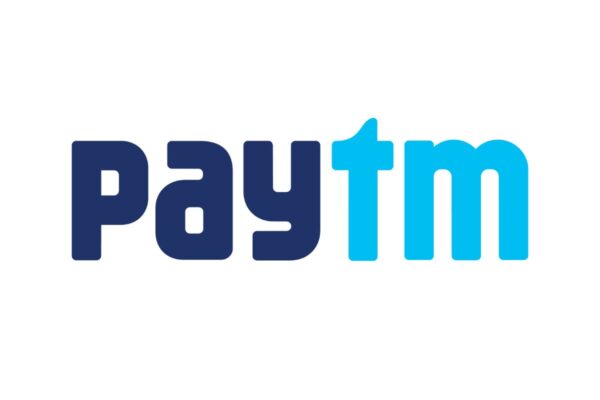
The brand colour blue, navy blue and sky blue, is used in the design of the Paytm Payments Bank logo, where the company name is “Paytm.” Paytm’s logo is recognisable, which helps people to know about the company.
Paytm stands for “Pay through Mobile,” which stands for the company’s digital transactional services. Paytm Karo is the company’s tagline for its vision.
Paytm: Revenue and Growth
Paytm, which was established in August 2010 and is marketed as India’s favourite payments app, has had amazing growth.
Vijay Shekhar Sharma invested $2 million to provide Paytm in August 2010, and since then it is expanding.
It is the top 10 most valuable brands in India, it is predicted to be worth more than $6.3 billion in 2020.
Despite having the first platform for prepaid mobile and DTH recharges, Paytm eventually introduced postpaid cell, data card, and landline bill payments in 2013.
The Paytm wallet was subsequently introduced in January 2014, and Uber and the Indian Railways have selected it. Paytm has started giving e-commerce bus, and online ticketing services.
They started giving movie events, tickets for parks, Paytm QR and aeroplane ticket purchases, rail bookings, and gift cards in 2016.
With the largest round of investment from a single investor, Softbank, Paytm’s valuation increased to an estimated $10 billion in May 2017. 2017 saw over 10 crore downloads of the Paytm app. In the same year, it introduced Paytm Gold, which is now a major player in India’s e-gold market.
To meet the many needs of its customers, it eventually introduced several other services, including the Paytm for Business app, the Paytm Gold savings plan, the Paytm First Games, and Money.
The RBI has given Paytm Payments Bank permission to act as a scheduled bank.
This helps in taking part in auctions, fixed-rate and variable-rate repurchase agreements (repos), reverse repurchase agreements (repos), and participation in the Marginal Facility. Additionally, Paytm Payments Bank would now be passed to collaborate on government-sponsored financial inclusion initiatives.
From two months ending in May 2022, Paytm’s lending division saw a 471 per cent rise in the number of loans given. From the 6.5 million loans it disbursed in the quarter ended on March 31, 2022, Paytm’s loan disbursal in Q2 2022 increased by 30%.
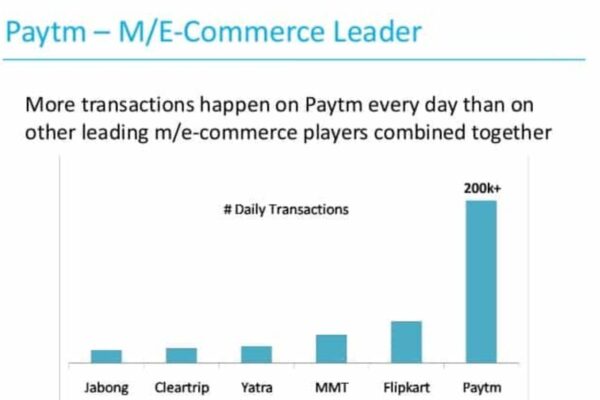
In addition, there was a rise in the number of loans disbursed, which went from Rs 3,553 crore in Q1 2022 to Rs 5,554 crore in Q2 2022, a 56 per cent QoQ increase. Along with these, It has seen growth in several other areas too, including its lending business, total merchant payments, monthly active users, and more.
In the two months that ended in May 2022, the firm increased the number of users transacting on the platform by 48 per cent from 50 million, which was recorded in the same period in the early fiscal, to 74 million. Paytm increased its monthly active users, as a result, going from 71 million in Q1 2022 to 75 million in Q2.
They will add 2 million offline devices annually. It had 0.9 million devices in May 2021, but that number increased by 277 per cent to 3.4 million by the conclusion of the period in May 202
Growth and Decline in Paytm Shares
One97 Communications’ stock just reached a three-month high of Rs 739. This happens on July 14, 2022, when the equities on the BSE increased by 4%. Since March 11, 2022, this was the highest which the Paytm stock has climbed. On July 18, 2022, the Paytm shares reportedly resumed their winning trend and closed 3.2 per cent higher at Rs 731.30.
The company announced a 492 per cent YoY rise in the total loan disbursements for the quarter that ended in June 2022, and the shares of the company started to rise. The Paytm shares have increased by 36% and recovered by 44%
Paytm unveiled the Paytm Mall.
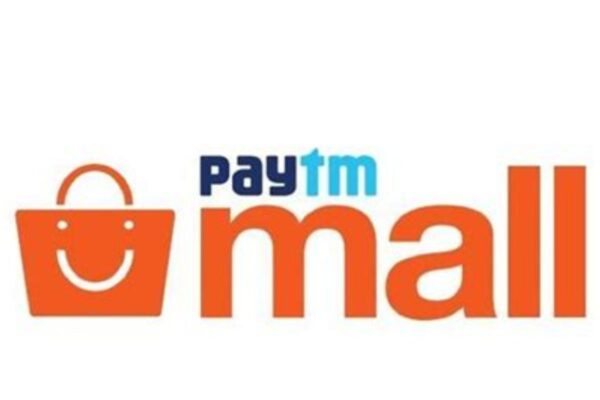
In February 2017, Paytm debuted the Paytm Mall. Paytm launched Paytm Mall as a move into the eCommerce space. The support for the Paytm wallet was another great move made by this project. Alibaba and Ant Financial provided continuous backing for the Paytm Mall, which was first built with a $200 million funding infusion from a Chinese company.
However, the Vijay Shekhar Sharma-led company’s Paytm Mall lost 99.5 per cent of its valuation which resulted in its recent decision to pivot to the Open Network for Digital Commerce (ONDC), which will signal a departure from the traditional physical goods e-commerce. Additionally, Paytm Mall stated that its investors Ant Financial and Alibaba have already left the business.
EGM will shortly be held by the corporation, according to news from May 17, 2022. A communication from Paytm Mall states will provide shareholders to approve a resolution to lower the company’s share capital. 12.06 lakh shares, each worth Rs. 10, will eventually replace the original share capital of 21.27 lakh shares.
The shares owned by Ant Financial and Alibaba will be cancelled and extinguished as a result. With the exit of Alibaba and Ant Financial, the $3 billion Paytm Mall shrank to 13 million.
Because the ONDC network is growing potential, it is being in a way to counter the dominance of Walmart-owned Flipkart and Amazon India. major players like Amazon, Reliance Retail, and Flipkart would join the ONDC network
Paytm Mini App Store
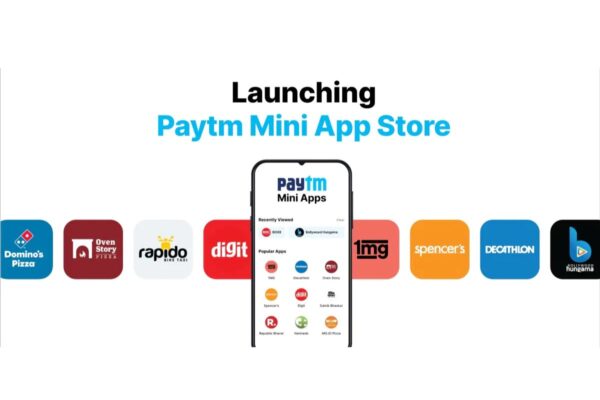
On October 5, 2020, Paytm, a digital payments provider, unveiled a tiny app store to assist Indian app developers and business owners.
As a result, Paytm became a direct rival of the Google Play Store. Following its temporary exclusion from the Google Play store on September 18 due to a violation of the developer criteria for real money gaming, Paytm has created the Mini app store.
In June 2018, Phonepe, a competitor of Paytm, unveiled its in-app platform. In October 2019, it changed its name to PhonePe Switch. Paytm is hosting links to Progressive Web Pages (PWAs), which are easily accessible that will run without being installed, instead of providing native apps and developers.
Mini applications help customers conserve data and memory by giving them an app-like experience without downloading.
A few apps were initially available in the mini-app shop, but the business intended to offer 300 services over the next several days, and it was successful. Over 600 apps have now been registered on the Paytm Mini Store, while another 1000 apps are now being developed.
The mini-app store was created to assist small developers and businesses in India in setting up affordable and simple build apps utilising HTML and Javascript, according to a press statement related to Paytm’s launch.
When the Paytm app store first launched, more than 300 apps, including Decathlon, Ola, Rapido, Netmeds, 1MG, Domino’s Pizza, FreshMenu, and NoBroker joined.
The number of these apps grew daily. Vijay Shekhar Sharma of Paytm and Harshil Mathur of Razorpay, among 50 other startup founders, addressed the prospect of establishing an Indian app store to compete with Google.
According to Paytm, the Mini app store saw over 12 Million visitors in September 2020 after spending some time in its beta testing phase with a small number of customers in the nation.
Open the Paytm app to get to the Mini App Store. Select Show More > Mini App Store from the pop-up menu on the homepage. Without requiring any further downloads or installations, the gateway gives consumers direct access to the apps so they may explore, use, and make payments through them.
The Indian app developers and business owners wanted a national app store alternative to Google Play after Google announced that it will enforce its 30% fee for apps. The 30 per cent commission in India was then delayed by Google Play Store until March 31, 2022.
According to the tech behemoth, the delay was necessary to give the Indian developers the time to integrate UPI for the subscription option that will be made available on Google Play.
The titan of a search engine has also stated that it will reduce the commission price from 30 per cent to 15 per cent and postpone the deadline until October 2022, giving Indian app developers enough time to realise their mistake.
Paytm brings in-store contactless ordering
The innovative concept of “contactless in-store ordering” was developed by the Indian e-commerce behemoth Paytm. The concept of Paytm contactless ordering, according to the article, will support the trend of minimising physical interaction.
In a statement, Paytm claimed that they had created an online ordering system where restaurants would provide customers with a QR code to scan to access the menu on their smartphones and place orders.
The contactless ordering and dining procedure will help consumers avoid the need to touch the menu, which can be unhygienic, and it will also keep a certain amount of space between the patrons and the waitstaff.
A few years ago, Paytm debuted the contactless payment or billing procedure, quickly gaining market share following the demonetization period.
Paytm is primarily aiming for the top 30 cities to start with over one lakh restaurants that would work in this manner now that the lockdown has been lifted. This idea has the potential to be quite successful because it is assisting the restaurants in reopening their doors after a lengthy closure.
After the nation’s reopening, this idea of contactless ordering and dining has been used to stop the spread of coronavirus infection. Additionally, restaurants have been instructed to maintain suitable hygienic conditions and maintain a specific distance between patrons and owners.
On November 3, 2021, of the 74 investors in Paytm, 21 had bids that were larger than Rs 100 crores.
Today, November 10, 2021, Paytm will conclude its initial public offering (IPO) round. The company received subscriptions of almost 48 per cent on Day 2 and is anticipated to close its IPO with a subscription of more than 56 per cent on Day 3. However, neither institutional nor non-institutional investors have yet demonstrated a considerable demand for the company’s securities.
On November 3, 2021, reports claim that 21 of the 74 investors in Paytm had bids that were more than ₹100 crore
Paytm will complete its first public offering (IPO) round today, November 10, 2021. On Day 2, the company received almost 48 per cent of the subscriptions needed to close its IPO.
Both institutional and non-institutional investors have not yet shown a large interest in the company’s securities.
According to sources, 21 of the 74 investors in Paytm had bids that were higher than Rs 100 crores on November 3, 2021.
Today, November 10, 2021, Paytm will have its initial public offering (IPO) round. The company received about 48% of the subscriptions required to close its IPO on Day 2. More than 56% of the subscriptions required to close the IPO are anticipated on Day 3. However, neither institutional nor non-institutional investors have yet expressed a significant interest in the company’s securities.
Business and revenue model for Paytm
The marketplace and payment banks are part of the Paytm business strategy. They receive income from a few different sources, including bill payment, recharge services, and payment solutions.
Fees from vendors and commissions in different categories make up the Marketplace’s revenue. Paytm receives revenue from cellphone operators through commission fees for recharge services.
The Paytm Wallet is utilised in almost all digital transactions. The more we utilise Paytm’s Wallet, the more money it makes from us.
Paytm developed “Wealth Basket” on the Paytm Money platform, a fully owned subsidiary of Paytm, to act as a marketplace for wealth and advice. To offer specialised advisory services and solutions to retail investors is the mission of Wealth Basket.
Through the introduction of these new wealth advisory services, Paytm hopes to establish itself as the go-to app for customers who want to prudently invest in and grow their money. To make this idea a reality, Paytm and WealthDesk, a startup in investment technology, already partnered.
However, many say that Paytm is coming already from a somewhat saturated field with its 400+ investments in software businesses. The same market is anticipated to increase at a CAGR of 22.4 per cent from now until 2025 when it is said to be worth $14.5 Bn.
Swiss RE is considering running for the board of directors of the Paytm insurance subsidiary. The reinsurance and insurance corporation with headquarters in Switzerland is reportedly looking to purchase 20–25 per cent ownership in the partnership, according to news dated October 5, 2021.
The association’s objective is to officially launch Paytm’s insurance business. The Indian digital payments software and merchant aggregation platform lack the insurance expertise that the Swiss RE will gladly provide, making the deal viable!
Challenges and controversies with Paytm
Resignations at Paytm
Paytm has worked with a productive staff that has advanced and company expansion. Not all of them, though, have stayed with the business. Yes, the business has faced several employee departures, much like the others. On July 9, 2020, Amit Nayyar, who had been President for 20 months, resigned.
Nayyar has reportedly put down his papers owing to personal concerns, according to individuals close to him. Then, on July 10, 2021, Paytm’s chief executive officer Rohit Thakur announced his departure.
Abhishek Arun, the Chief Operating Officer (COO) of Paytm Payments Bank, worked there for more than five years before announcing his departure on December 23, 2021, via a Linkedin post. Arun was formerly RBL Bank’s Senior Vice-President.
The management of Paytm received a resignation letter from Renu Satti, COO, for offline payments. Satti’s departure was questioned, and there was a good chance that she would stay on, but that didn’t happen. On December 23, 2021, Satti—who had been employed by Paytm for more than 15 years and had worn many leadership hats, including that of CEO of Paytm Payments Bank—resigned. Satti had formally left the company, and the current CEO of Paytm Lending is Bhavesh Gupta.
After giving his notice on December 23, 2021, Abhishek Gupta, who joined the firm in 2020 as Senior Vice-President and COO-lending, also announced his resignation at the same time.
Play Store removes the Paytm app
The Paytm app was abruptly removed from the Google Play Store on September 18, 2020, as a result of alleged violations of the regulations governing unlicensed gambling apps.
According to CNBC – TV18, Google informed the developers of this vulnerability in a statement on September 18. Google claims that we don’t permit sports betting apps that are part of the unregulated internet gambling industry.
Google added that the software sends visitors to a third-party website where they may register for paid tournaments and participate in contests to win actual money or cash. This removal did not affect those who already had the Paytm app installed on their phones, but new users were prohibited from doing so.
Chinese citizens who had utilised wallets like Paytm, Cashfree, and Razorpay were involved in an online betting scam that was discovered by the Enforcement Directorate, which is how the whole affair began. Searches were conducted at 15 different places, including Delhi, Gurugram, Mumbai, and Pune.
Four bank accounts worth a combined Rs. 46.96 crores have been frozen as a result of the companies’ involvement in the operation of questionable online gambling apps with connections to China. The majority of Dokypay Technology Pvt Ltd’s accounts were uncovered in the HSBC bank in 2019 following an ED search.
Because Paytm First Games was slated to launch on September 19 of the same year, this was also a significant setback for Paytm. Sachin Tendulkar serves as the brand ambassador for the fantasy gaming platform developed by Paytm First Games, the pioneer in Indian digital payments.
The app planned to have more than 100 million users during the next Indian Premier League, and it had more than 200 live events scheduled for the platform.
Vijay Shekhar Sharma tweeted that the Paytm app is back live on the Play Store thanks to the help of the public and that CashBack and Scratchcards are not gambling.
Due to the app’s violation of the company’s gambling policy, Google Playstore later lifted the restriction it had previously placed on it.
Chinese Product Boycott Forced Paytm to Alter Shareholding Structure
Paytm adjusted its investment structure in Wikipedia following the most recent border incident between India and China, which led to the government banning the bulk of Chinese imports in 2020. This resulted in a variety of criticisms of China, its businesses, and its products, as well as the “Make in India” catchphrases.
By the strategic agreement, Alibaba buy a 40% stake in Paytm in March 2015.
As pressure mounted, Paytm replaced “Alibaba” with “ANT Financials” in Wikipedia’s shareholder structure on June 18, 2020. known as Alipay, ANT Financials is an affiliate company of Alibaba. The Twitteratis claimed that Paytm did this to sound non-Chinese as a result of this.
Twitter users are urging people to stop using Paytm because they have more Chinese shareholders. Some of them posted photos of the Paytm app being uninstalled. As an alternative to Paytm, they propose using BHIM and other Indian UPI apps.
Because Paytm is an Indian enterprise, some people still advocate for it.
They have stakes in many different businesses, including Zomato, Swiggy, Snapdeal, Ola, and Flipkart.
Value Proposition for Paytm
One of Paytm’s most well-known service offerings—and the company’s original service offering—was recharges. After that, the business continued to diversify its offerings by developing other services with the aid of its Paytm Wallet, E-commerce division, the launch of Digital Gold, and other initiatives.
Paytm adds value for businesses by providing a variety of digital payment options, both in-person and online.
Paytm adds value for merchants. Additionally, it takes into account more modern inventions like QR codes, email links, text messages, Paytm’s digital wallet service, as well as those of its competitors, such as United Payments Interface, as well as more conventional means like debit and credit cards (UPI).
The hardware needed for actual in-store purchases is also provided by the Paytm company. Additionally, Paytm’s payment services are connected with its Smart Retail platform, a solutions-based business model designed to provide retailers with extra value by assisting them in managing and optimising payments as well as other crucial aspects like analytics, inventory, and marketing.
Plans
The company focuses on financial services, e-commerce, and payments three primary areas of interest. Over the next three years, they expect to invest $1.4 billion. The investment’s primary goal will be to increase the company’s financial services. Paytm planned to invest Rs 300 crore in branding and marketing to reach its goal of 100 million T20 subscribers. Vijay Shekhar Sharma, the founder of Paytm, stated that the company should turn a profit by September 2023.



